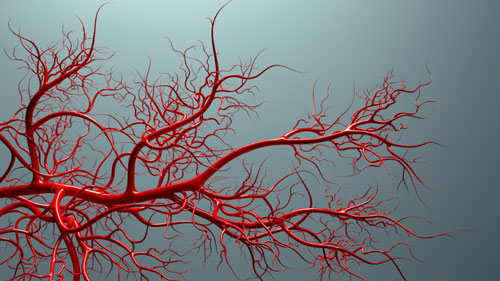LEAF-4L6715.
Proprietary Liposomal Transcrocetin
for Hypoxia-Related Disorders
-
"Hypoxia—an inadequate supply of oxygen to body tissues—is implicated in the world’s 10 leading causes of death, claiming more than 30 million lives each year. At LEAF4Life, we address this critical need for oxygen to mitigate hypoxia-related damage and save lives. By enhancing the efficacy of standard care therapies, we strive to improve outcomes in conditions such as acute respiratory distress syndrome (ARDS), cancer, neurodegenerative disorders, cardiovascular diseases (including ischemic stroke), and other serious illnesses."
 Clet Niyikiza, PhDInventor, Founder, & Executive Chairman
Clet Niyikiza, PhDInventor, Founder, & Executive Chairman
-
Our Mission
We are on a mission to discover, develop, manufacture and commercialize innovative medicines that target high unmet medical needs arising from the complications of hypoxia (oxygen deprivation). We seek to make these treatments available to patients across the globe, including emerging economies.

-

Meet LEAF-4L6715
Our lead asset, LEAF-4L6715, a novel liposomal formulation of transcrocetin, is designed to enhance oxygen diffusion in plasma and interstitium to address hypoxia-related disorders.
-
Clinical Trials
LEAF-4L6715 Is being studied in three Phase 3 registrational studies in Europe: Acute Respiratory Distress Syndrome (ARDS), Glioblastoma, and Sarcoma.

-

ARDS
LEAF-4L6715 received Compassionate Use Authorization in France for ARDS.
Hypoxia is Life Threatening
What is hypoxia and which diseases are implicated?
-
Deprivation
Hypoxia is the deprivation of adequate oxygen supply in a region of the body, resulting in organ destruction, organ failure, and death -
Multifactoral
Hypoxia is multifactorial and an underlying cause of many diseases, responsible for >30M deaths annually
-

In ARDS/Sepsis/Respiratory Failure
Hypoxia occurs when the lungs cannot efficiently transfer oxygen into the bloodstream, often due to inflammation, fluid buildup, or infection. In ARDS, damaged lung tissue causes fluid to leak into the alveoli, impairing oxygen exchange. Sepsis triggers widespread inflammation, leading to blood vessel leakage and further reducing oxygen delivery to tissues. Hypoxia also damages the vascular endothelium, compromising microcirculation, which can disrupt blood flow to vital organs. This compromised microcirculation often leads to multi-organ failure and, if untreated, can result in death.
-
In Cancer
Hypoxia occurs when tumors grow faster than their blood supply, causing oxygen deprivation in the tumor environment. In response, the tumor activates pathways that stimulate the growth of new blood vessels, a process called angiogenesis. While these new vessels aim to restore oxygen, they are often irregular and poorly formed, leading to inefficient blood flow and further contributing to the tumor’s growth and its resistance to therapies. The hypoxic environment also supports cancer metastasis, allowing tumor cells to spread to other parts of the body. As a result, hypoxia plays a key role in tumor progression and treatment resistance.

-

In Cardiovascular Disease
Hypoxia kills living tissue by disrupting heart function and peripheral circulation, depriving tissues of oxygen and essential nutrients. In cardiovascular diseases, blocked or narrowed arteries prevent proper blood flow, causing oxygen shortages. This triggers inflammation, blood clotting, and damage to blood vessels. Over time, chronic hypoxia worsens conditions like heart failure, atherosclerosis, and ischemic heart disease, increasing the risk of complications such as arrhythmias or heart attacks.
-
Anti-Aging
In aging, hypoxia plays a key role by contributing to cellular stress and damage. As we age, the efficiency of diffusivity (transport) of oxygen (and other nutrients such as glucose) by the blood declines, leading to reduced oxygen supply to tissues. This oxygen deprivation triggers cellular responses that accelerate aging processes, including inflammation and subsequent age-related diseases. Indeed, over time, chronic hypoxia can impair tissue regeneration, promote the accumulation of damaged cells, and contribute to a number of age-related conditions such as cognitive decline, muscle atrophy, cancer, cardiovascular diseases, and many other diseases.

ARDS
Acute Respiratory Distress Syndrome (ARDS) is Caused by a Broad Range of Direct and Indirect Lung Injuries
-

Sepsis Related ARDS
Life-threating medical conditions, main cause of ARDS and is the body’s extreme response to an infection. Responsible for 30% of ICU admissions. Compromised microcirculation is the driver of sepsis and is responsible for multi organ failure and death.
-

COVID-19 Related ARDS
Severe COVID-19 causes inflammation and fluid in the lungs, leading to ARDS and ultimately hypoxia. ARDS is the major cause of mortality in COVID-19.
-

Other Causes of ARDS
Can be triggered by many diseases and conditions including pneumonia, aspiration, sever chest injury, inhaling harmful substances, blood transfusions.
